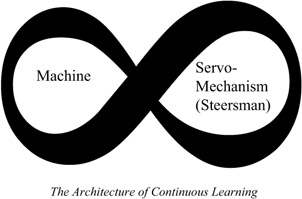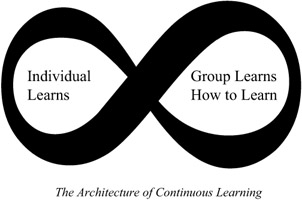The Organization as System: Closed Machine Systems vs. Open Living Systems
The secret of any method is to arrange all facts into a system.
—Descartes, Rules for Direction of Mind, 1630
There are two types of organizational systems, namely machine systems and living system. One way of expressing the difference is through the metaphors of the machine and the garden—the one mechanical, the other organic. Machine systems are closed, and are based on cybernetics theory (small machines steering large machines). Living systems, on the other hand, are open and based on organic theories of self-organization. Modern systems thinking tends to embrace both of these theories.
Machine Systems Theory
Originating in the seventeenth century celestial mechanics of Newton's astronomical system, machine systems were brought down to earth in the twentieth century by the cybernetic thinkers Norbert Wiener and William Ashby. During the 1940s, both these men explored the crucial role of feedback and of servo-mechanisms in machine systems. Servomechanisms are the small servant machines that play steersman to the main system, course-correcting the system so that it performs optimally (see Figure 4). For example, governors controlled early steam engines, thermostats controlled furnaces, and, in a similar manner, today's cruise controls control cars, automatic pilots steer aircraft, and automatic focus devices focus digital camcorders. In organizations, the governors correspond to the managers—steering and course-correcting the entire organization.

Figure 4: Machine Systems Design.
Living Systems Theory
Where machine systems are "planned" systems, living systems are "self-organized," developing organically over time. Open systems theory implies all things link up and influence one another, in all directions (easy to say, but challenging to work with). Drawing heavily on Aristotle, Goethe, Herder, and Hegel, the biologist Ludwig Bertalanffy developed living systems theory in Austria in the 1920s (see Figure 5). The theory later became known as "open" systems and also "general" systems theory. His research, focusing on self-evolving systems from single-cell organisms to entire organizations, studied how higher, second-order living systems (managers in an organization) controlled lower, primary-order systems (employees). Social psychologists Kurt Lewin and Gregory Bateson followed Bertalanffy and extended the metaphor to learning, studying the interaction between the small-group learning by employees and higher level learning by managers (and trainers). Not only did each group have to learn from each other, but the trainers in particular had to "learn how to learn" (i.e., learn how to teach), which Bateson called deutero-learning, and what we today call meta-learning (the organization "learning how to teach"). The theory has continued to evolve, particularly in the organizational systems thinking of Wheatley and Capra (see Fastpaths 1992 and 1996).

Figure 5: Living Systems Design.
EAN: 2147483647
Pages: 110